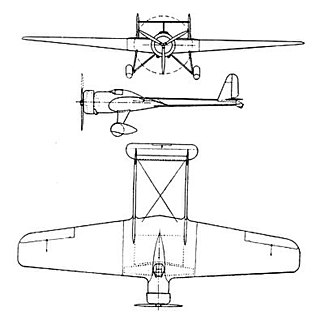
The Beriev Aircraft Company, formerly Beriev Design Bureau, is a Russian aircraft manufacturer, specializing in amphibious aircraft.
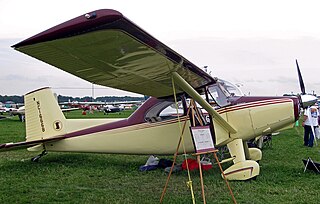
Luscombe Aircraft was a United States aircraft manufacturer from 1933 to 1950.
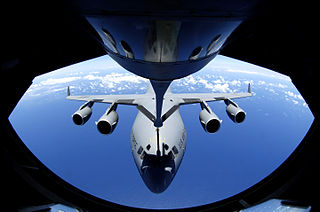
Aerial refueling, also referred to as air refueling, in-flight refueling (IFR), air-to-air refueling (AAR), and tanking, is the process of transferring aviation fuel from one military aircraft to another during flight. The two main refueling systems are probe-and-drogue, which is simpler to adapt to existing aircraft, and the flying boom, which offers faster fuel transfer, but requires a dedicated boom operator station.

The Ryan Aeronautical Company was founded by T. Claude Ryan in San Diego, California in 1934. It became part of Teledyne in 1969, and of Northrop Grumman when the latter company purchased Teledyne in 1999. Ryan built several historically and technically significant aircraft, including four innovative V/STOL designs, but its most successful production aircraft was the Ryan Firebee line of unmanned drones used as target drones and unmanned air vehicles.

The Fairchild C-119 Flying Boxcar is an American military transport aircraft developed from the World War II-era Fairchild C-82 Packet, designed to carry cargo, personnel, litter patients, and mechanized equipment, and to drop cargo and troops by parachute. The first C-119 made its initial flight in November 1947, and by the time production ceased in 1955, more than 1,100 C-119s had been built. Its cargo-hauling ability and unusual twin-boom design earned it the nickname "Flying Boxcar".
Sir W. G. Armstrong Whitworth Aircraft Company, or Armstrong Whitworth Aircraft, was a British aircraft manufacturer.
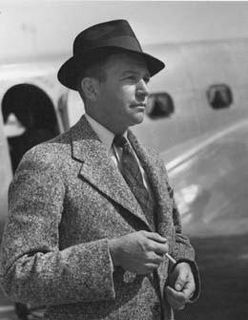
Clyde Edward Pangborn also known as "Upside-Down Pangborn" was an American aviator and barnstormer who performed aerial stunts in the 1920s. In 1931 Pangborn and co-pilot Hugh Herndon Jr. flew their plane, Miss Veedol, on the first non-stop flight across the Pacific Ocean.

The Grumman F3F was the last American biplane fighter aircraft delivered to the United States Navy, and served between the wars. Designed as an improvement on the single-seat F2F, it entered service in 1936. It was retired from front line squadrons at the end of 1941 before it could serve in World War II, and was first replaced by the Brewster F2A Buffalo. The F3F which inherited the Leroy Grumman-designed retractable main landing gear configuration first used on the Grumman FF served as the basis for a biplane design ultimately developed into the much more successful F4F Wildcat.

Vance Air Force Base is a United States Air Force base located in southern Enid, Oklahoma, about 65 mi (105 km) north northwest of Oklahoma City. The base is named after local World War II hero and Medal of Honor recipient, Lt Col Leon Robert Vance Jr.
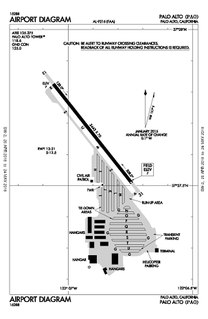
Palo Alto Airport is a general aviation airport in the city of Palo Alto in Santa Clara County, California, USA, near the south end of San Francisco Bay on the western shore. It is among the busiest General Aviation airports in the United States, though the #1 rank belongs to Van Nuys Airport (KVNY)

The Battle of Sunchon was an air battle fought near the city of Sunchon, North Korea on 1 December 1951, during the Korean War. Up to 14 Gloster Meteor jets of the RAAF's No. 77 Squadron were attacked by at least 20 MiG-15s of the Soviet Union's 176th Guards Fighter Aviation Regiment. The MiGs carried Chinese air force markings, as the USSR was not officially a combatant in the Korean War. Its experience in the battle led to No. 77 Squadron's being redeployed to ground attack duties.
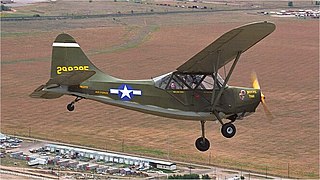
The Stinson L-5 Sentinel was a World War II era liaison aircraft used by all branches of the U.S. military and by the British Royal Air Force. It was produced by the Stinson Aircraft Company. Along with the Stinson L-1 Vigilant, the L-5 was the only other American liaison aircraft of World War II that was purpose-built for military use and had no civilian counterpart. All other military liaison airplanes adopted during World War II were lightly modified "off-the-shelf" civilian models.
The Seaplane Experimental Station, formerly RNAS Felixstowe, was a British aircraft design unit during the early part of the 20th century.
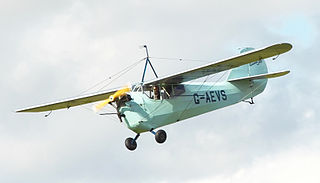
The Aeronca C-3 was a light plane built by the Aeronautical Corporation of America in the United States during the 1930s.
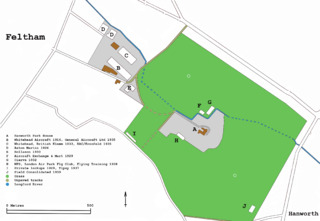
London Air Park, also known as Hanworth Air Park, was a grass airfield in the grounds of Hanworth Park House, operational 1917–1919 and 1929–1947. It was on the southeastern edge of Feltham, now part of the London Borough of Hounslow. In the 1930s, it was best known as a centre for private flying, society events, visits by the Graf Zeppelin airship, and for aircraft manufacture by General Aircraft Limited (GAL) 1934–1949.

Vance Breese (1904–1973) was an American aviation engineer and test pilot.

The Breese-Wilde 5 is a custom-built high-wing monoplane that was produced for and used in the Dole Air Derby of 1927.
The Mason Greater Meteor also called the Warren & Montijo Monoplane, the Glenmont Landau Sedan, the Belmont Cabin Monoplane M-1, the Mason Meteor M, the Mason Greater Meteor M-200 and the Pride of Hollywood was the first aircraft built by California Polytechnic College students.
John G. Montijo (1891–1929) was an American aircraft engineer and instructor.


